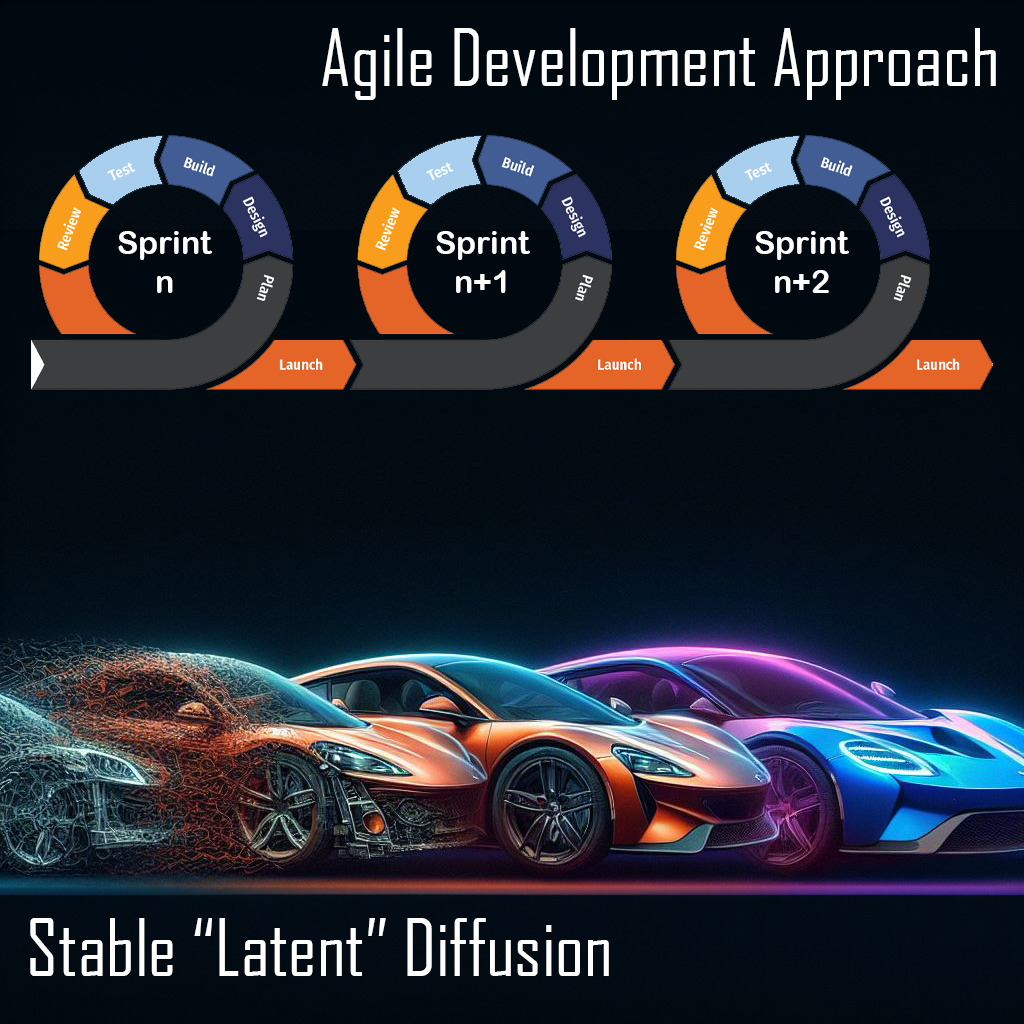Here is the Freaky Friday Post… is it Crazy of Creative to form similarity from Stable Diffusion against Agile Development. So, when I say image generation it is referenced in the term of AI image generation
Although, Stable diffusion in AI and Agile development methodology represent two distinct but interconnected concepts in the realm of technology and innovation. Let’s explore the key aspects of both and draw a comparison:
Stable Diffusion in AI:
- Controlled Integration:
- AI Technologies: In stable diffusion within AI, there is a controlled and gradual integration of artificial intelligence technologies into various domains. This approach ensures that the implementation is measured, minimizing disruptions and allowing for a smoother transition.
- Ethical Considerations:
- AI Adoption: Ethical concerns are carefully addressed during the diffusion of AI. Responsible AI adoption requires a focus on transparency, fairness, and accountability to build trust among users and stakeholders.
- Adaptive Implementation:
- Sector-Specific Integration: Different sectors adopt AI at their own pace based on their specific needs and requirements. For instance, healthcare may implement AI in diagnostics, while manufacturing may focus on process optimization.
- Balanced Progress:
- Harmonious Coexistence: The stable diffusion of AI aims for a harmonious coexistence of human decision-making and AI-driven processes. This ensures that AI complements human capabilities without replacing them entirely.
Agile Development Methodology:
- Iterative and Incremental:
- Agile Principles: Agile development is characterized by an iterative and incremental approach to software development. Projects are broken down into small, manageable units, allowing for flexibility and adaptability throughout the development process.
- Customer Collaboration:
- User Involvement: Agile methodology emphasizes continuous customer collaboration. It involves regular feedback and adaptation to changing requirements, ensuring that the final product meets user expectations effectively.
- Cross-Functional Teams:
- Collaborative Teams: Agile development promotes cross-functional teams with varied skill sets working together. This fosters collaboration, quick decision-making, and the ability to respond promptly to changes in project requirements.
- Continuous Improvement:
- Feedback Loops: Agile incorporates regular feedback loops, encouraging continuous improvement throughout the development cycle. This flexibility allows teams to adjust their strategies based on real-time feedback.
Comparison:
- Flexibility and Adaptability:
- Agile: Agile methodology is inherently flexible, allowing development teams to adapt to changing requirements.
- AI Stable Diffusion: While stable, AI adoption also requires adaptability to address emerging ethical concerns and technological advancements.
- User-Centric Approach:
- Agile: Prioritizes customer collaboration and feedback.
- AI Stable Diffusion: Focuses on user trust and ethical considerations, ensuring user acceptance.
- Measured Integration:
- Agile: Delivers software incrementally.
- AI Stable Diffusion: Gradual integration into specific sectors, ensuring a measured approach.
In conclusion, while Agile methodology and stable diffusion in AI operate in different domains, both emphasize adaptability, user collaboration, and a measured approach to change. Combining these principles can lead to a more responsive, user-centric, and ethically sound approach to technology development and implementation.



